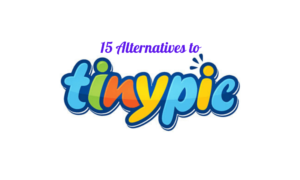Did you know that the global market for OTT streaming is expected to reach over USD 158 Billion by 2024? The Over the Top (OTT) media revolution has transformed how content is distributed to the final audience.
Exploiting the loopholes in the traditional distribution and media networks, the OTT platforms leverage the internet infrastructure to deliver content directly to the viewers. This gives them much more flexibility in choosing the content they want to consume and the time at which they want to access the content.
OTT broadcasting surpasses various media mediators who control the network to deliver content directly to the viewers. OTT broadcasting puts the professional broadcasters in the front row by giving them the chance to interact with a live audience. A majority of internet-powered devices that can receive and display the signals can be used for an OTT streaming platform. The Video on Demand model came into existence during the mid-90s.
However, the content options were quite limited, and it was expensive than the alternatives available. OTT platform has leveraged the internet to overcome these challenges, so it has been quite popular among audiences in the contemporary.
Here’s How OTT Is Changing the Media Industry
The growing popularity of OTT media platforms has also made it the preferred choice for OTT broadcasters to deliver their content to the targeted audience. With the increase in internet penetration across the globe and affordable internet plans, the usage of mobile phones and smart TV devices has grown exponentially. As per a recent study, the global mobile data traffic will reach 77 exabytes per month by 2022 from a mere 28 exabytes in 2019. A 3-fold increase within three years. Smart TV’s penetration rate also grew from 11.5% in 2013 to 32% in 2019.
1. OTT Platform Is Helping Build Direct Connection with Users
Traditionally, broadcasters rely heavily on cable and DTH platforms to distribute their content to the final users. The advent of OTT media streaming has made it easier and more convenient for the broadcasters to directly showcase their content to the final users, removing any middlemen in the process. The best thing about this is that it helps them build a direct relationship with the users on the OTT platform. It also helps them create a strong brand image and improves brand recall. In addition to this, broadcasters can also obtain detailed insights about their users and how they interact with their content. This will help them create what the target audience wants instead of just forcing content.
See Also: IBM Watson Media Alternatives | Best OTT App Builders
2. Providing Seamless Viewing Experience
The OTT platforms have always worked on making it more convenient for the viewers to stream and watch content. It provides them with the needed flexibility to choose and watch the content they want at their preferred timing. A seamless viewing experience across multiple devices and platforms is a must-have for OTT platform owners who want to build a sustainable following and audience base. Broadcasters also need to rethink their strategy for entertaining the multi-screen viewer segment.
3. Availing Multiple Monetization Options
One of the best things about OTT platforms is that it offers broadcasters and content creators leverage multiple monetization options to bank on their talent and hard work. Some of the most commonly used monetization methods include subscription video on demand, transactional video on demand, advertisement video on demand, third-party ad integrations, etc. The most prominent ones in the market include the subscription monetization model and the advertisement monetization option.
4. Becoming Go-to Option for Top Advertisers
You will be amazed to learn that the total ad spent for OTT platforms was approximately equal to USD 990 million in the year 2020. As the popularity of OTT platforms is growing among the audience, advertisers want to advertise more on these platforms to obtain quality traffic and a suitable audience. This helps to increase their marketing ROIs and also leads to higher conversion rates. Advertisers also have more flexibility to advertise their products and services based on user behaviors and preferences.
5. OTT Is Shapping the Future
The most important reason why broadcasters are switching to OTT platforms in the contemporary is that it is the future and will soon dominate the media and entertainment industry. If you are a broadcaster or a content creator, you should realize how important it is to ride on this wave unless you want to remain insignificant in the long run. The viewership is gradually escalating on OTT solutions, and you must not miss this golden opportunity of directly showcasing your offerings to the final viewers.
In the contemporary landscape, everybody is betting huge on the use of OTT technology to deliver content. All the traditional media channels and broadcasters find new ways to enter the OTT space and make their content available online through Over-the-Top platforms. This has drastically increased the competition in the OTT entertainment landscape. A need to create a robust strategy is indispensable to survive in this competitive landscape. OTT video platform giants have already devised a mechanism to keep their audience hooked using their ‘Original’ content.
Related:
- How Do I Fix My Netflix Connection Problem Code NW-2-5?
- What Are the Best Free Android TV Apps?
- Rabbit Alternatives | Sites like Rabb.it TV
- Stremio Alternatives for Android TV, FireStick, PC [Free]
- Kodi Alternatives (Better Than Kodi)
- Stream2Watch Alternatives
- KissAnime Alternatives
Conclusion
If you are a broadcaster or a content creator still relying on the traditional distribution network to deliver content, you need to rethink your strategy. Building an OTT platform will help you directly connect with your audience and also help you learn about what your target audience wants to watch. Choosing a reliable OTT platform provider will help you monetize your content easily using multiple monetization methods and also help you create a strong brand in the market.





















